Renting a motorbike in the Philippines is undoubtedly the best way to get around. It gives you the most freedom to go anywhere, and it’s also the cheapest way to travel.
But if it’s your first time renting a motorbike, it can feel a bit intimidating. What kind of motorbike should you get? Where do you rent from? How do you avoid getting stuck with a busted motorbike?
I put together this guide based on my experience renting seven different motorbikes across Cebu, Bohol, Siargao, and Camiguin in the Philippines. I’ve rented from designated rental shops, through my accommodations, and one time from a random house with a sign out front. I’ve seen the good, the busted, and everything in between.
In this guide, I will explain everything you need to know before renting a scooter or motorbike in the Philippines, including what kind of motorbike to rent, where to rent, prices, and what to look out for when you get on the road.

What kind of motorbike should you rent?
Here’s a list of all the motorbikes I’ve rented in the Philippines, along with my thoughts on each. Your choice boils down to where you’re going, whether you’re riding with a passenger, and how much comfort or power you need.
Honda Beat 110cc
The Honda Beat is the workhorse of motorbike rentals in the Philippines. You’ll find this bike in nearly every rental shop. It’s lightweight, small, and easy to handle and park. That said, if you have a passenger or are riding for long distances I’d get something bigger.
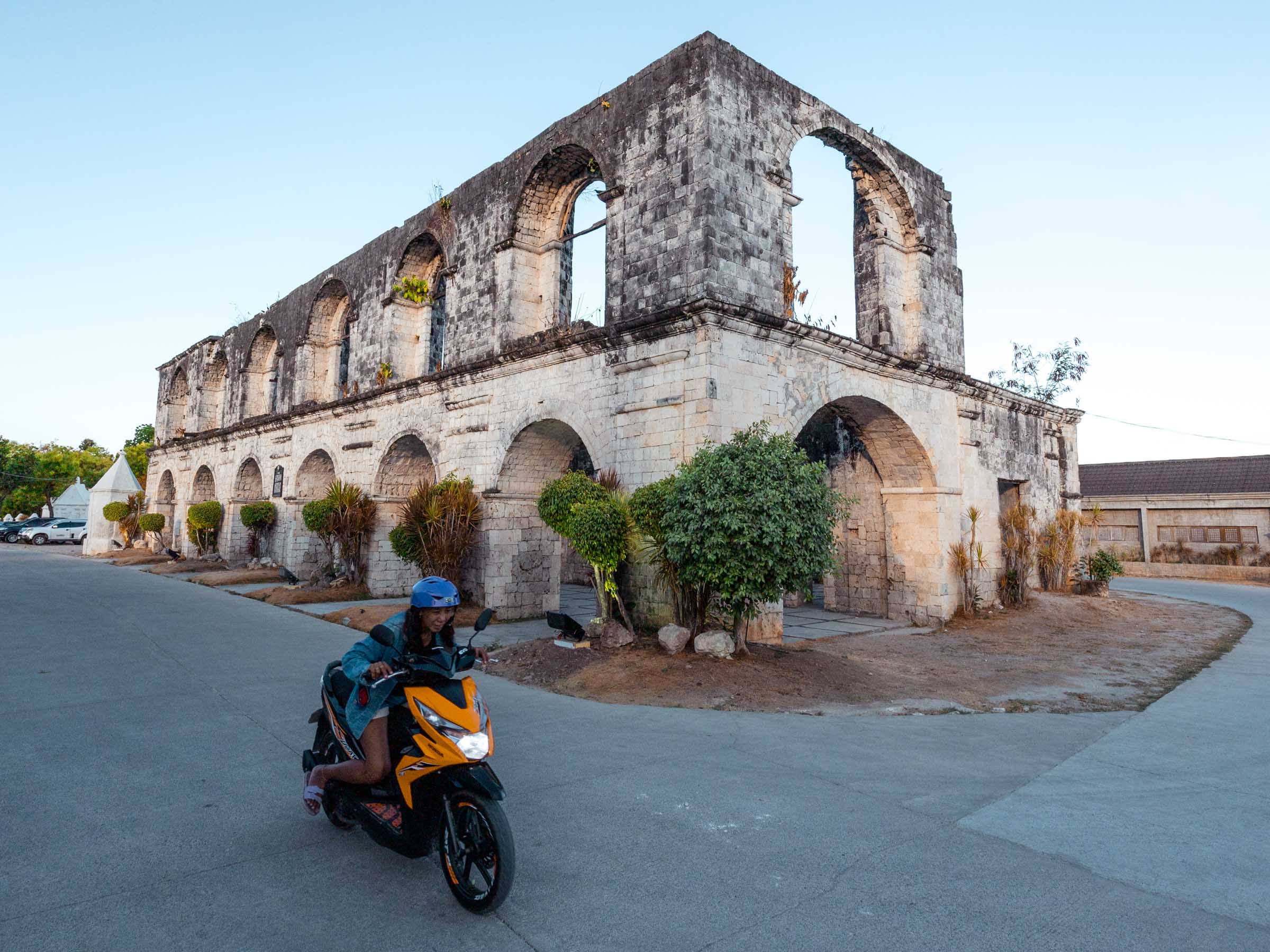
Honda Click 125cc
Great all-around option. It rides smoothly, is comfortable, and has enough power for most situations. It’s a solid choice for both short and long trips, whether solo or with a passenger. Some shops also offer a 160cc version of the Click, which is better if you’re packing more weight or going up steep inclines.
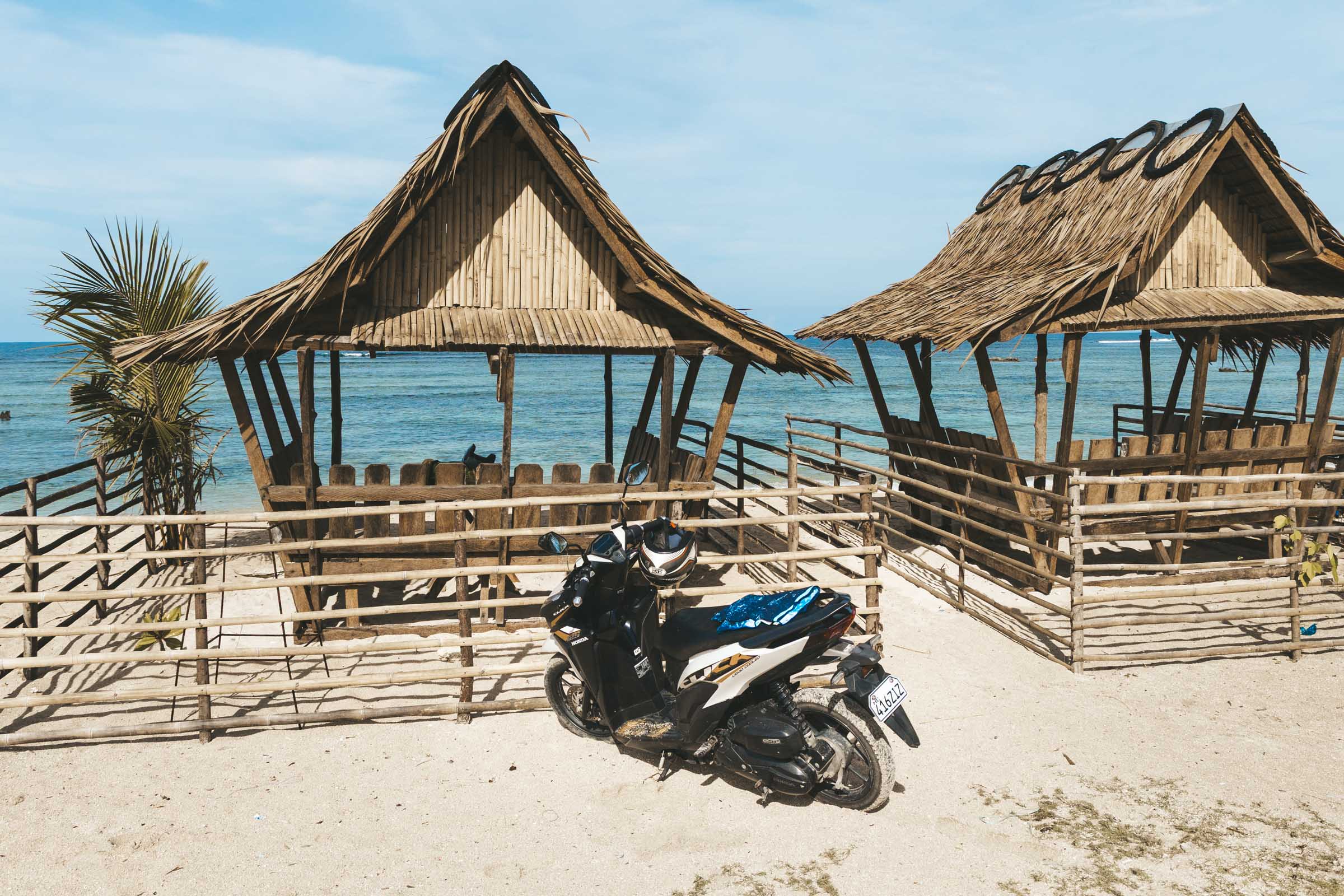
Honda PCX 150cc
The PCX is a larger motorbike, and riding it is kind of like driving an SUV. It’s more comfortable for long rides, but also heavier and wider, which can make tight turns and parking a little more troublesome.
Honda ADV 160cc
The Honda ADV was my favorite motorbike that I rode in the Philippines. It’s big and has a comfortable riding position. Chloe said it was the most comfortable motorbike to ride on the back of. It also has some modern features like traction control, which came in handy on rocky roads. I’m glad that we had this motorbike for long trips around Cebu and Bohol.

Yamaha Mio 125cc
The Mio is in the same category as the Honda Click, but a notch below in quality and feel. We rode one all over Camiguin and it got the job done, but it felt slightly less comfortable. I think it would be fine for solo riders but I wouldn’t rent one again if better options were available.

Yamaha NMAX 155cc
Very similar to the Honda PCX in both size and riding experience. It has the same pros and cons: smooth on highways, clunky in tight spaces.

Motorbike Engine Size and Weight
No matter what kind of motorbike you ride, its power will be greatly affected by how much weight is on it. The more weight you’re carrying, the more strain on the engine, whether that’s luggage, a passenger, or just being a larger person.
Where Is the Best Place to Rent a Motorbike?
Dedicated Rental Shops
I almost always try to find a dedicated rental shop to rent a motorbike in the Philippines. These businesses specialize in motorbike rentals, so their bikes tend to be better maintained. They also usually offer more choices and slightly better prices.
Renting Through Your Accommodation
Renting through your accommodation is convenient, especially if you’re on a tight timeline or staying somewhere out of the way. There are two flavors of this:
1. Rental Shop Delivery
Some accommodations work with nearby rental shops to have a motorbike delivered to you.
While this is super convenient, you don’t get to choose the specific bike. When I tried this in Siargao, the bike they brought was in bad shape, so after I took it for a test ride I politely declined.
2. In-House Motorbike Rentals
Some accommodations have a few motorbikes of their own and rent them out directly. I did this once in Bohol. The bike worked fine, but it was old and a bit beat up. It also cost more than what I would’ve paid at a proper shop. Not surprising, since accommodations don’t specialize in bike maintenance or rentals.
Generally, the prices of renting motorbikes through your accommodation tend to be slightly higher than going through a rental shop directly. That’s the price of the added convenience. But in some cases, the extra cost might be worth it if it saves you a tricycle ride into town (and another ride back when you return the bike). Something to think about.
What I recommend
What I recommend is going to a rental shop when you rent your motorbike so you can pick and choose exactly the specific motorbike, give it a test ride, and then ask if they will pick it up from your accommodation when you are done renting. That will save you a tricycle ride after you return the motorbike.
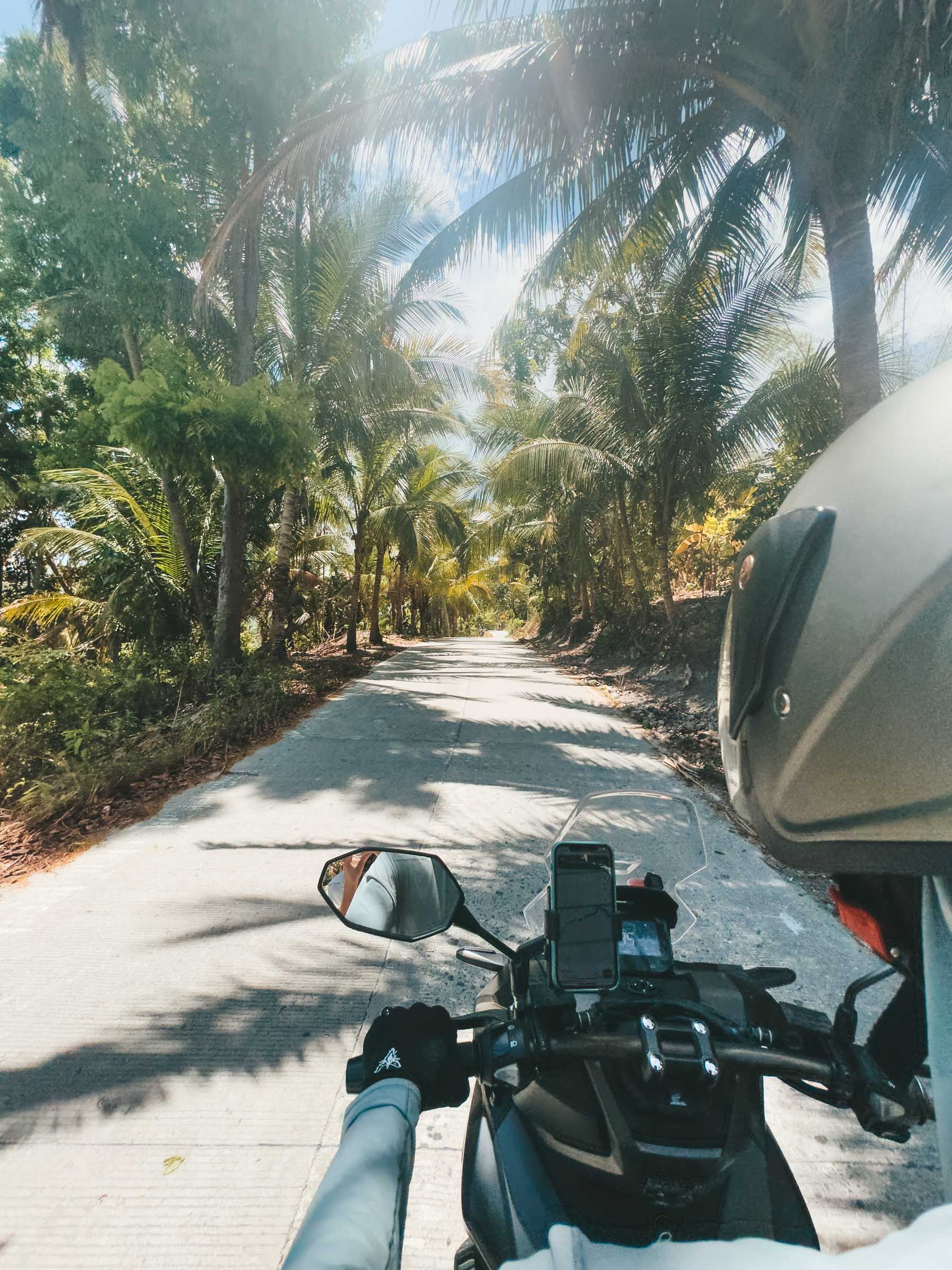
Renting a motorbike in the Philippines
Before you rent your first motorbike, here is an intro to how the process works, what to do when you visit the rental shop, and tips to make sure you don’t get stuck with a bad bike or a bad deal.
Motorbike rental deposit
Most rental shops will ask for a deposit as collateral. This usually comes in one of two forms:
- Your passport or some form of ID, or
- A cash deposit, usually about 2,000–5,000 pesos
In my experience, not every rental shop requires a deposit, but it’s always best to be ready just in case. Personally, I don’t like leaving my passport behind, so I always offered cash as a deposit and every rental shop I dealt with never had a problem with that.
Motorbike rental prices in the Philippines
The price you pay for a motorbike rental in the Philippines depends on:
- The kind of motorbike you rent. Bigger, newer, or more premium bikes will naturally cost more.
- Where you rent your motorbike. Generally, the more touristy an area, the more expensive the rental will be.
- Length of the motorbike rental. Most rental shops offer discounts for longer rentals. If you’re renting for at least three days, ask if there’s a multi-day rate.
- Supply and demand. If you are in an area with only 1 or 2 rental shops, then they control supply and can set their prices to whatever they want.
Motorbike rentals work on a 24-hour basis. So if you rent a bike at 9 AM, it’s due back by 9 AM the next day.
Based on my experience renting motorbikes, and contacting about dozen or so motorbike rental shops during our travels in the Philippines, here is roughly what you can expect to pay per day for a motorbike rental:
- Honda Beat 110cc: 300 – 400 pesos per day
- Honda Click 125cc: 400 – 600 pesos per day
- Honda PCX 150cc: 700 – 800 pesos per day
- Honda ADV 160cc: 700 – 800 pesos per day
- Yamaha Mio 125cc: 300 – 500 pesos per day
- Yamaha NMAX 155cc: 600 – 750 pesos per day

What to check before choosing a motorbike
Arguably more important than what kind of motorbike you rent is the condition of the bike. The servicing and condition of motorbikes impacts the driving experience much more than in automobiles.
Basically, if the motorbike isn’t taken care of it will ride like shit. I can’t stress this enough.
That’s why it’s so important to rent from a reputable shop that actually takes care of their bikes. If you’re unsure, check their Google reviews to get an idea of the experiences of other customers.
Also, try to go for a newer motorbike whenever possible. They’ve had fewer riders, fewer oil changes missed, and generally haven’t had a chance to be beaten to hell.
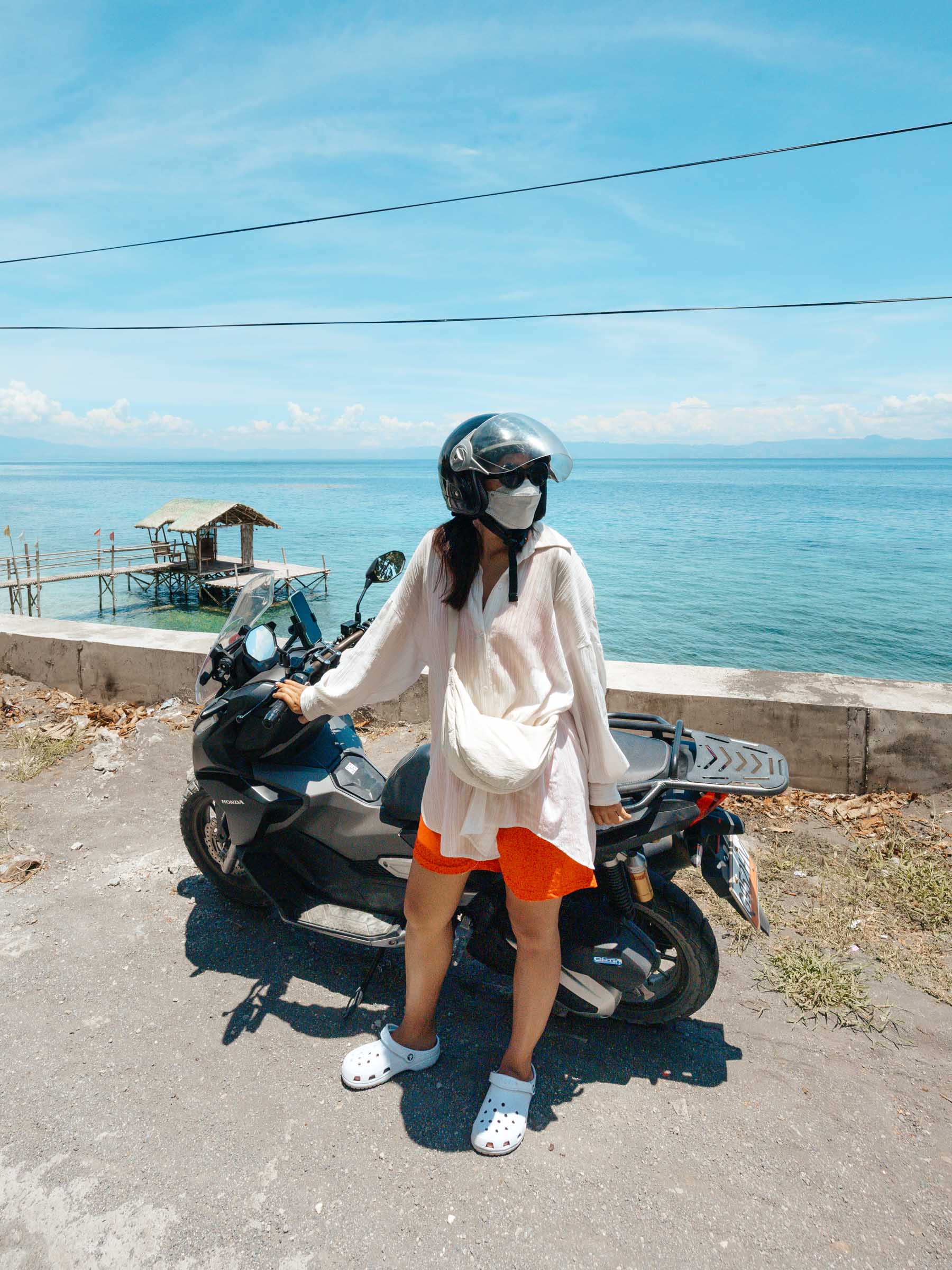
Taking the motorbike for a test ride
I recommend asking the rental shop if you can start the motorbike and take it for a spin around the block before renting. That’s what I do and they never have declined. A good shop will be confident that their rentals will serve your needs and will be glad to let you test it out.
Here’s what to check on the motorbike before renting it:
- Starter: The motorbike should start right up without hesitation.
- Fuel Level: Most motorbike rentals in the Philippines require you to return the motorbike with the same amount of fuel as when you rented it.
- Tires: Pick a motorbike with good tread on the tires, and good air pressure. You need as much grip as you can on potentially slippery and rainy roads.
- Lights: Test the headlights, including the high beams.
- Horn: Make sure it works. You will be using it.
- Brakes: Get a feel for the brakes. Make sure that they can stop the bike quickly. Check that the rear brake lights activate when braking.
- Mirrors: Adjust the mirrors to your height and make sure they aren’t cracked or loose.
- Seat: The under seat storage should open, close, and lock securely. Make sure it can’t be opened by just pulling on it. Generally, you don’t want to keep anything too valuable in there since there are ways to open them regardless, but you don’t want to have a motorbike that makes it easy.
- Registration papers: Usually located inside the storage compartment under the seat. If you go through a police checkpoint they will ask for these.
- Phone holder: Not a requirement, but is nice to have since you can put your phone in there and have your map navigation while you ride.
The last thing you do before you ride off from the rental shop is take photos/videos of the exterior of the motorbike, especially if you see any scratches or damage.
If you see any damages be sure to photograph them and point them out to the rental shop owner. That way you are both on the same page about the condition of the motorbike before you rent it from them.

Requirements to ride a motorbike in the Philippines
Technically speaking, you need a motorcycle endorsement on an International Driver’s Permit (IDP) to legally ride a motorbike in the Philippines. That’s the official rule. The same as most countries.
However, in practice, it’s a little looser.
Based on what we’ve experienced and from talking to other travelers and locals, police at checkpoints are usually just looking for some form of valid driver’s license. That could be an IDP or even just your driver’s license from back home.

My Experience with Checkpoints
At every checkpoint I’ve been stopped at, police just gave my IDP a quick glance to confirm the photo matched me, checked the motorbike’s registration papers, and let us through.
It probably helped that Chloe was sitting right behind me, always smiling and friendly. A couple of those quick stops turned into conversations about how we’ve been enjoying our time in the Philippines. One officer even gave us tips on spots to check out. A little friendliness goes a long way.
That said, let me be clear. Even if the rules are often loosely enforced, you technically still need an IDP with a motorcycle stamp. If you don’t have it, there’s always a risk of:
- A ticket
- Your motorbike being confiscated
- Being asked to pay a bribe
Types of Police Checkpoints in the Philippines
You’ll mostly encounter checkpoints along main roads or chokepoints where there’s no easy way around. Here are the two kinds of checkpoints I’ve run into:
1. Safety Checkpoints
These are quick and casual. Police are just scanning for obvious safety violations. No helmet, too many passengers, or unsafe cargo. If you’re riding responsibly and wearing a helmet, you’ll probably be waved through without even stopping.
2. Document Checkpoints
These are more thorough. Everyone gets stopped, and officers will ask for:
- Your driver’s license or IDP
- The motorbike’s registration papers
- And of course, make sure you’re wearing a helmet
Now that we are on the topic of helmets…
Safety Tips for Riding a Motorbike in the Philippines
Here I will provide some safety and general driving tips for riding a motorbike in the Philippines based on my experience riding there.
1. Wear a Helmet and secure it properly
First of all, ALWAYS wear a helmet. ALWAYS. Preferably a full-face one.
Most rental shops provide helmets, and we never had trouble getting full-face ones with our motorbike rental. Sometimes they’ll try to hand you a basic helmet, but ask for a full-face.
Now, what the rental shops call “full-face” helmets in the Philippines are usually not the same type of full-face helmets elsewhere. They don’t have the portion that goes over your mouth and chin. But they do cover your ears and have a face shield. So they aren’t true full-face helmets, but it’s the best you’re gonna find unless you bring your own helmet.
Always secure the chin strap on your helmet correctly. Your helmet won’t help you if it flies off in a crash. The chin strap should go under your chin, not just resting on it. And tighten it enough so it can’t slip off. A loose helmet is basically just a hat.
2. Go Slow
Another thing — GO SLOW. This is one of the most important tips I can give you.
The roads in the Philippines are notorious for being a mish-mash of brand new well-paved roads, old roads riddled with potholes, and unpaved bumpy dirt roads. Sometimes all within a kilometer of each other.
There’s also tons of road construction happening across the country, which is great for the country long term. But that means you need to put up with road construction if you visit the Philippines right now.
There have been so many times when I was cruising down a perfectly smooth, brand new road, then BAM it ends and transitions right off into a dirt foundation. It’s so important to go slow and be aware of what’s coming up ahead of you at all times.
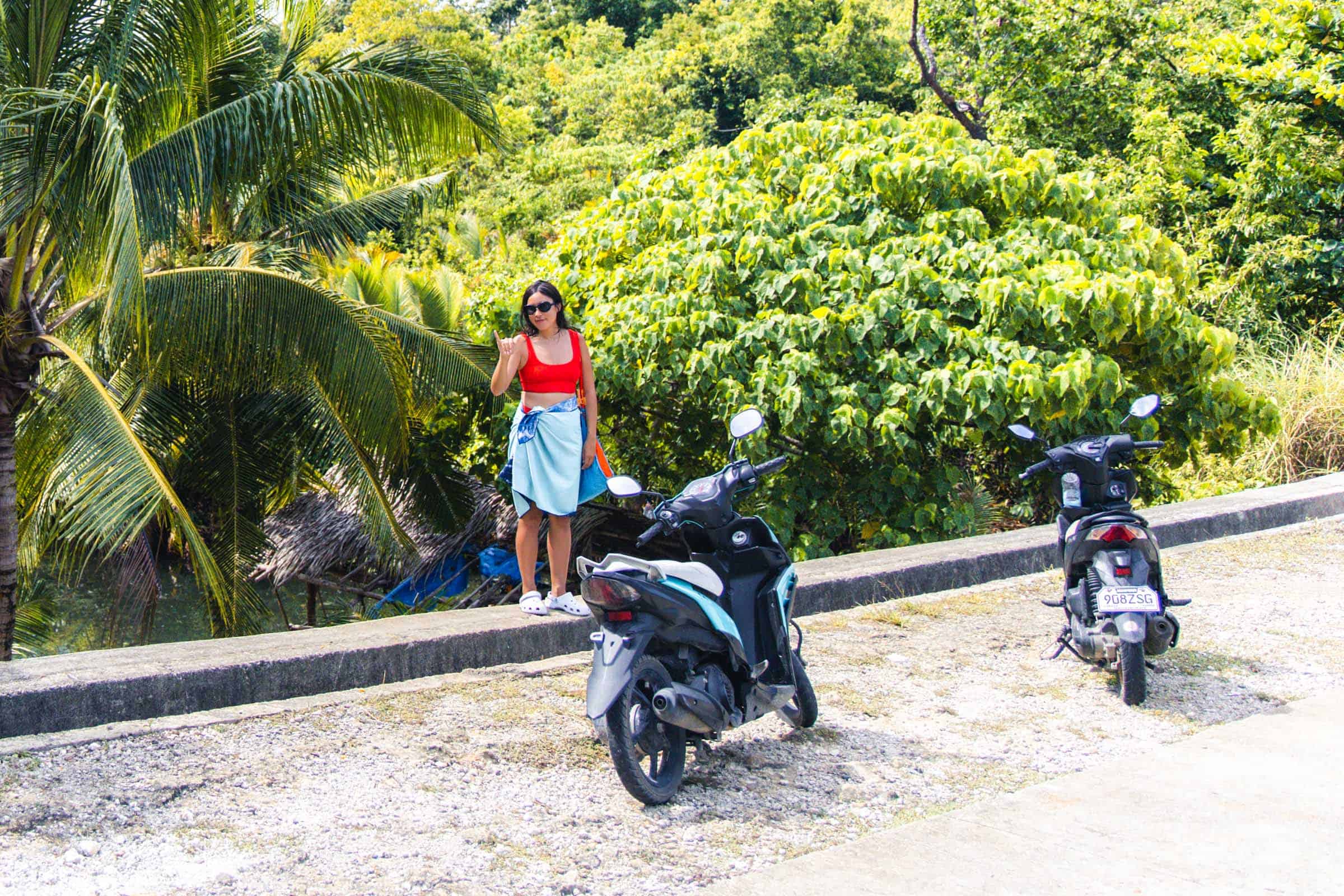
3. Watch out for hazards
On the same note, there are tons of road hazards in the Philippines so it’s doubly important to go slow, ESPECIALLY when making turns. If you make a turn into loose gravel you will easily lose traction and wipe out. Just try to get from point A to point B safely. This isn’t the X-games.
Here are a few things you can expect to find on the roads:
- Sudden transitions from pavement to dirt
- Loose gravel and debris
- Surprise rain puddles
- Random dogs darting across the road
4. Wear dust and eye protection
Roads in the Philippines get DUSTY. Especially during the dry season. Always wear a mask or something over your nose and mouth. The alternative is having your mouth and nose caked up with dirt by the end of your ride. You’ll see locals riding around with bandanas and shirts tied over their faces.
Also, wear eye protection. Especially if your helmet doesn’t have a face shield. There is so much dust, bugs, and rocks flying around on the roads that you WILL get something in your eyes eventually if you don’t use eye protection. If you just wear your prescription glasses or sunglasses that’s enough, just wear something over your eyes.
5. Sun protection
Last but not least is sun protection. The sun in the Philippines is no joke. Cover up. If you are riding long distances, slather on some sunscreen. Or wear long pants and a long shirt, that’s what I did.
In our photos you’ll see my normal riding outfit — long sleeve hooded shirt, long pants, and gloves. Basically, trying to cover every inch that is exposed to the sun.
It’s not necessary for just driving 5 minutes across town, but if you are going adventuring all over the island then you need to protect your skin. One of our hostelmates in Siargao had the two reddest thighs I’ve ever seen after a couple of days of riding around in shorts.

Riding Tips for Motorbiking in the Philippines
1. Download Offline Maps
Google Maps works great when you have cell service. Which you often won’t.
The Philippines has spotty cell coverage. In my experience, the cell coverage in the Philippines is much worse than in Thailand and Vietnam.
Download offline maps and preview your route before riding so you know your key turns in case navigation cuts out mid-ride.
2. Fuel Up Before Long Rides
Always fill up your gas tank before going on a long ride. Especially if you have a smaller motorbike. The last thing you need is to run out of fuel in the middle of nowhere.
125cc motorbikes and below have small gas tanks, which are good for about 1-2 days of riding around.
3. Avoid Driving at Night
Try to avoid driving at night, especially out in rural areas. Rural roads get very dark at night, and street lighting is rare.
One evening, we hung out at the Chocolate Hills in Bohol until sunset… and that meant riding back all the way to Panglao in the dark. It was tough to see at night with the only light coming from our headlights. It was a long ride home.
4. Parking your motorbike
Parking your motorbike sounds simple but there are so many things to look out for. Especially in the Philippines, where most times you’ll be parking off-road in the dirt, gravel, or grass.
First, always try to find a flat area to park your motorbike. Uneven surfaces will make the bike unstable. The angle at which the motorbike leans on its kickstand is very fickle with uneven terrain.
Next, NEVER park your motorbike facing downhill, that goes against the physics of the kickstand, and the motorbike will topple over.
And lastly, think about your exit when you park. Most times you will need to push your motorbike backward out of its parking spot first before you can hop on and ride away. Leave yourself some space to push the bike out and ride off, and avoid tight spots.
Are You Following Our Philippines Blogs?
During our 5-week adventure in the Philippines, we found some of the country’s most stunning natural wonders—milky blue waterfalls, limestone caves, and incredible snorkeling spots.
To help fellow adventurers, we’ve put together guides to the best places we found. You can check them out by clicking the links below.
- Our Ultimate Guide to Cebu: 15 Incredible Things to Do in Cebu
- Our Ultimate Guide to Bohol: 24 Awesome Things to Do in Bohol
- Our Ultimate Guide to Siargao: 26 Awesome Things to Do in Siargao
- Our Siargao Beach Guide: 15 Best Beaches in Siargao
- Our Ultimate Guide to Camiguin: 16 Awesome Things to Do in Camiguin

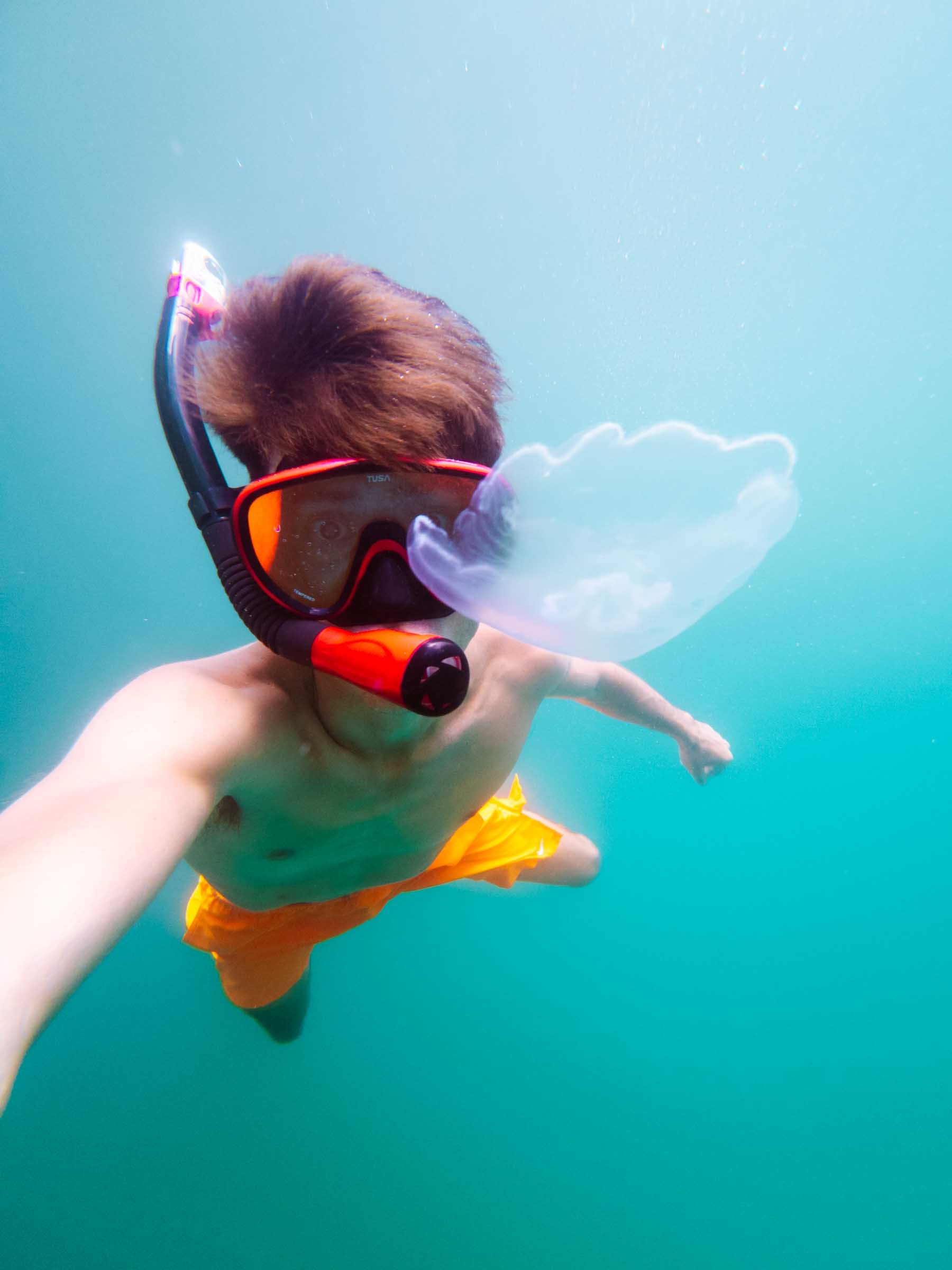
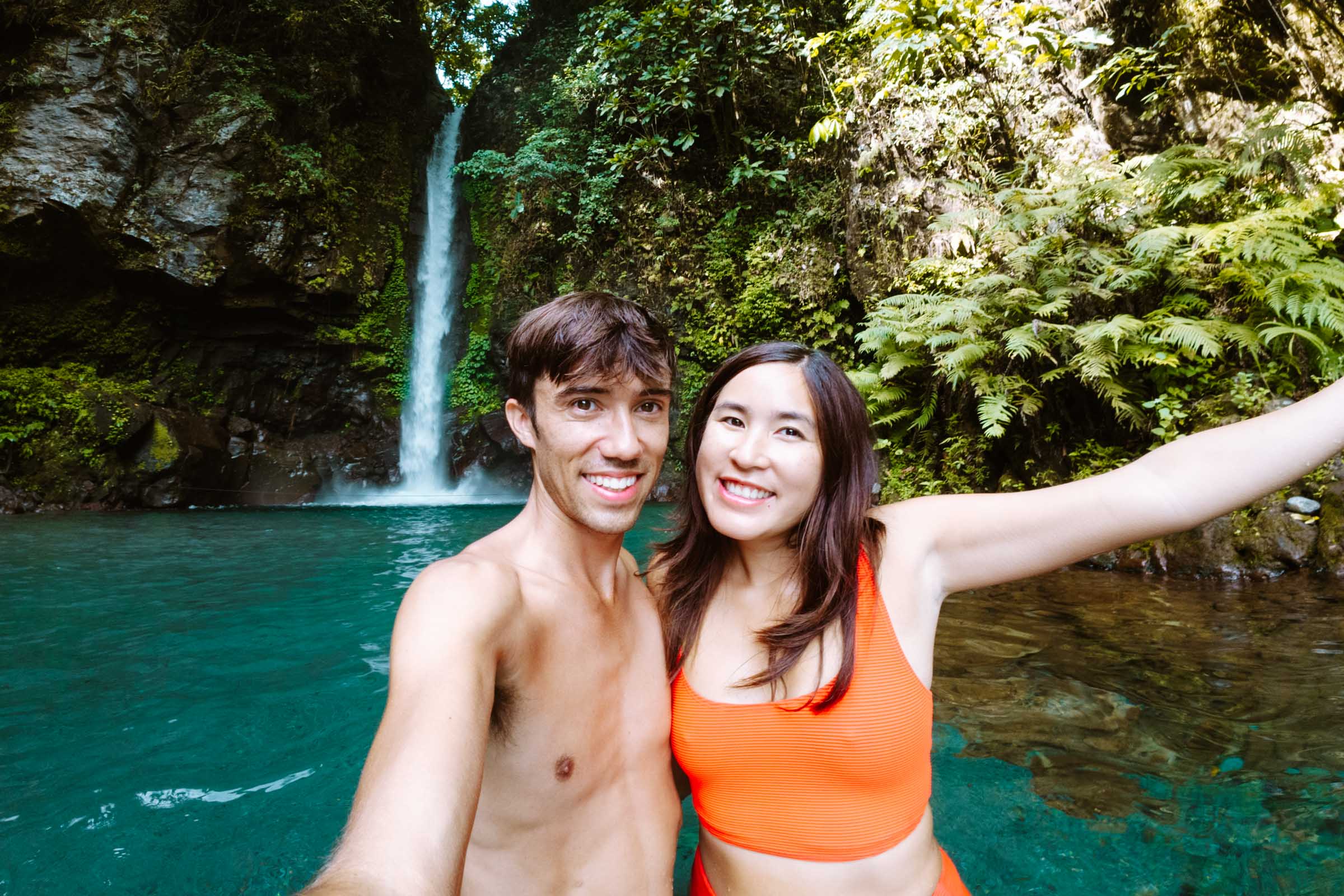

I hope you enjoyed my guide to renting a motorbike in the Philippines. Feel free to leave a comment below if you have any questions 🐸


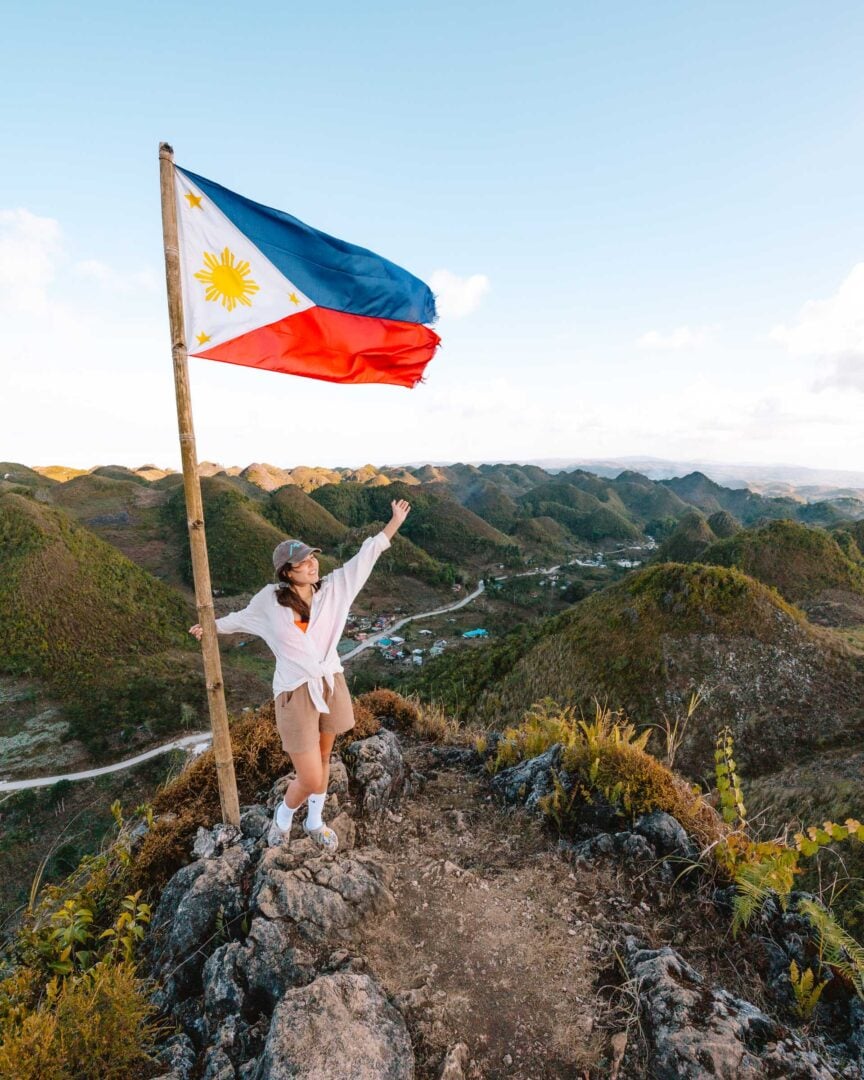
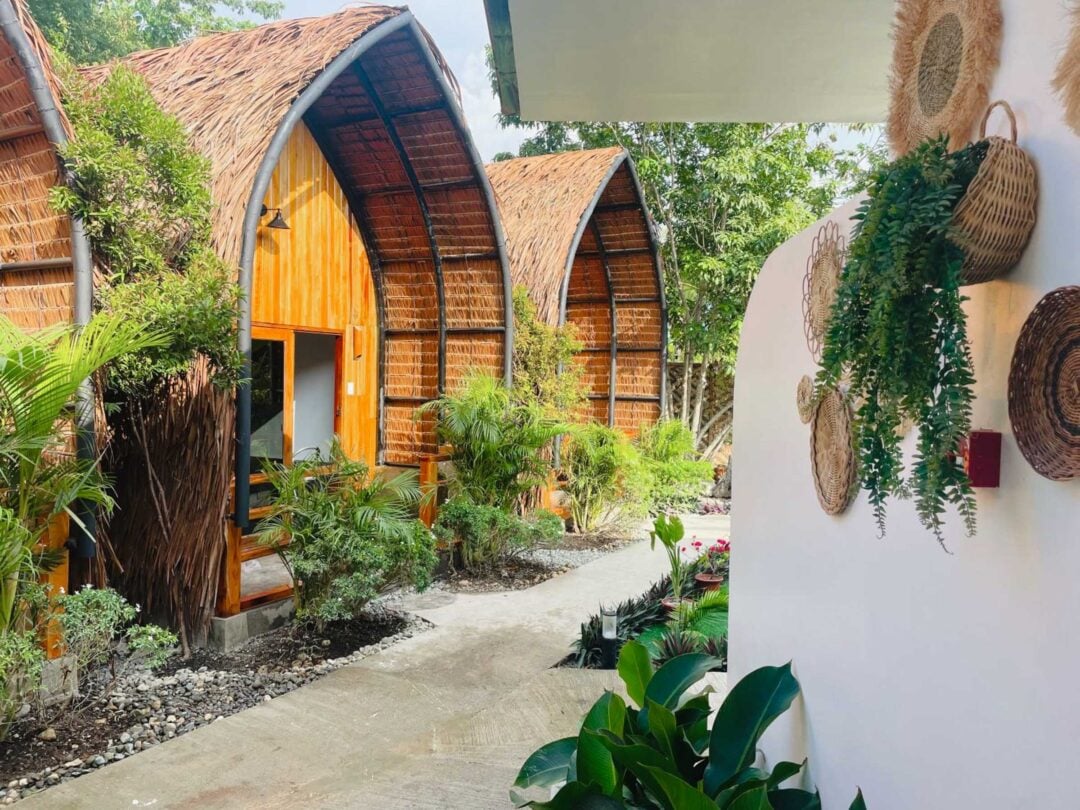
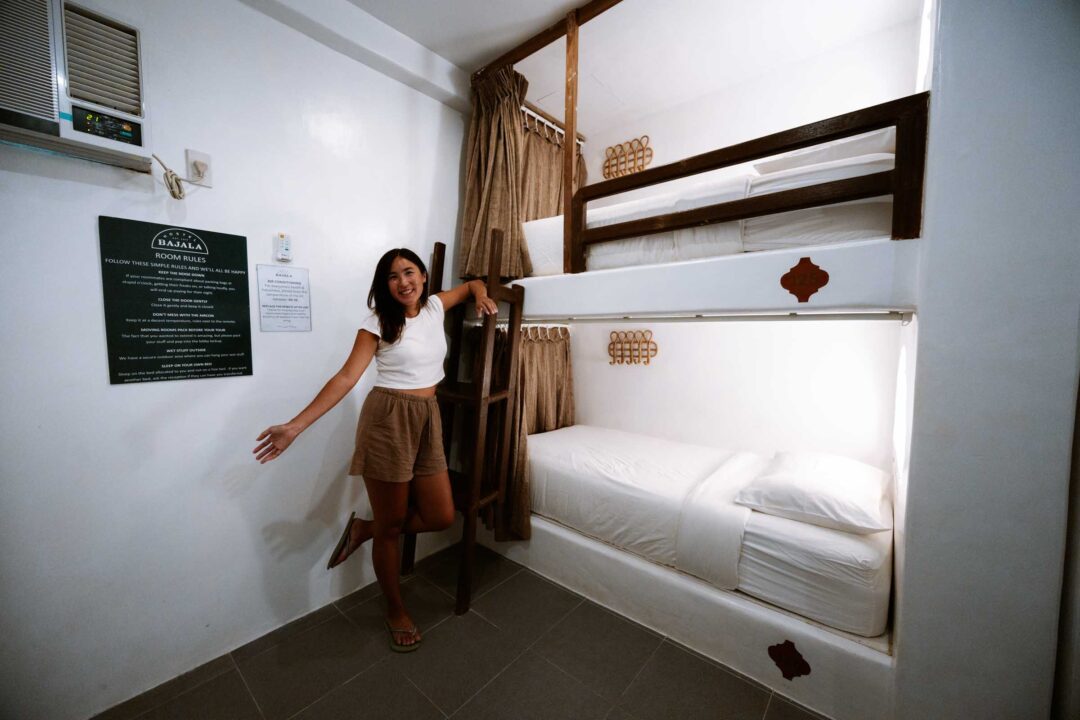
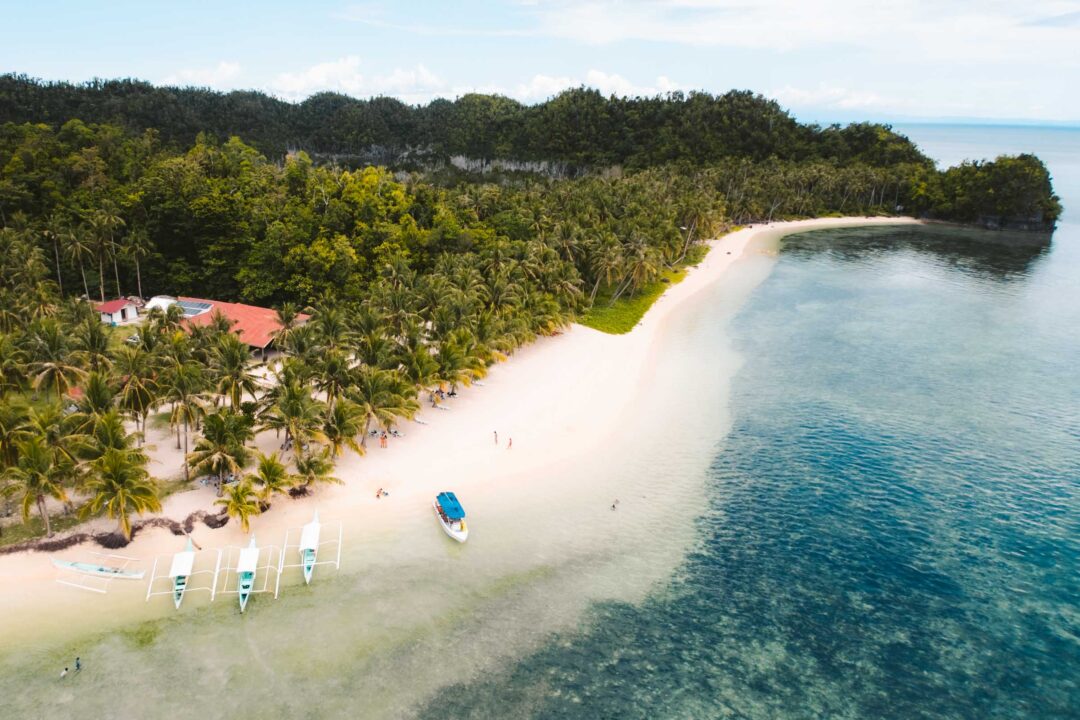
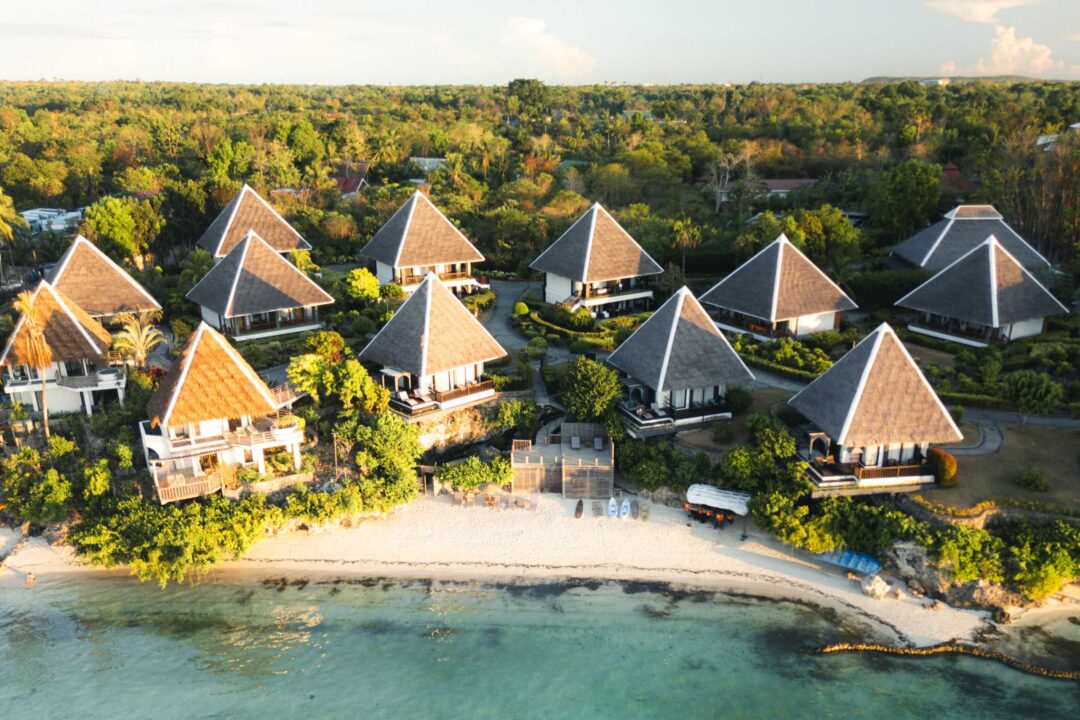


What shop did you use in General Luna, Trey?
We used KanTwo rentals in General Luna
Cheers Trey
I just spent my very first visit overseas to Cebu and absolutely love the place and the people. I’m definitely coming back next year. Didn’t get a chance to ride on this trip but thanks to your advice, I’m so ready for next year.
Safe travels mate
Rik
Sydney, Australia
Hey Rik, glad you had an awesome time in Cebu! Hope your next one is even better!
Thank you for putting this together! I’ve visited the philippines a few times with my girlfriend but we haven’t rented a motorbike before. I was thinking about renting one next time so this helped a lot!
Glad it helped you out. Have fun!
Thanks Trey, I enjoyed your article. I am married (15 years) to a Filippa. We live in Australia but next year we will be coming to live with our (my wife’s) family in Kalibo for 6 months each year. I am looking to rent a scooter or bike in Kalibo, Aklan (hopefully something like you have advised a Honda ADV 160 or Yamaha NMAX 150cc) for a period of up to 6 months and all that you have advised is good advice. Should you know of any rental shops in Kalibo then that would be excellent news for me. Feel free to email me at the following address, should you have further advice for me.
Thank you
Glenn